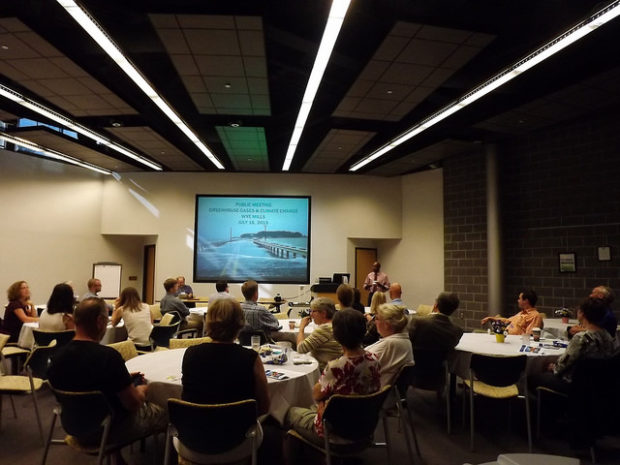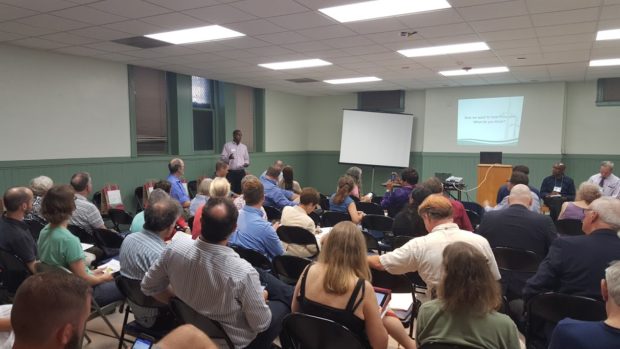We have much more to do and your continued support is needed now more than ever.
Taking Climate Action in Maryland

In a continuing series of public meetings, Marylanders’ voices are being included in recommendations for climate legislation that will ultimately impact their lives. In 2009 Maryland’s General Assembly passed the Greenhouse Gas Reduction Act (GGRA), which required the state to cut greenhouse gas emissions by means of over 150 programs related to energy efficiency and the use of renewables, like wind and solar. The GGRA has been a crucial factor in Maryland’s status as a leader in climate mitigation efforts, though it must be renewed by the legislature in 2016 to remain in place.

When the GGRA was originally passed it was based on a climate action plan prepared by the Maryland Commission on Climate Change. While the Commission originally served only to write the initial climate action plan, a 2014 executive order reinstated and enlarged the entity, who will now be publishing reports on an annual basis. One hope for the Commission’s revival is that it will give a well-rounded group the chance to lay recommendations for the political framework as Maryland moves forward in a changing climate.
Since the upcoming year is crucial for the GGRA, the Commission is employing an interactive strategy to determine the recommendations it will make for Maryland to continue its work as a leader on climate action. Along with the Maryland Department of the Environment, the Commission has begun a series of public comment meetings aimed at assessing what Marylanders think should be done to minimalize the state’s contribution to climate change.
These meetings have acted as a bridge between Marylanders and the Commission’s final report, which will be released in November. The Commission member leading a meeting on the Eastern Shore, Stuart Clark, said “we see this as the beginning of a discussion,” one that will, presumably, continue until the completion of this year’s report.

The diverse backgrounds of participants elevated the round table’s effectiveness. The meetings were witness to many impassioned arguments for expanding Maryland’s climate action goals. Cheryl Arney urged the commissioners to strengthen the state’s commitments to greenhouse gas reductions and renewable energy implementation for the sake of her thirteen-year-old granddaughter, who will have to face the challenges of a runaway climate in the coming decades.
Although Maryland has been receiving attention as being relatively proactive with climate action Cheryl urged the commission when she said “We need to go further,” adding that, in particular, “the commission needs to be working hard to increase these standards of renewable energy.”
The Commission report will be released in November, leaving a good amount of time for legislators to consider the finalized policy recommendations by the time the Maryland General Assembly reconvenes in January. The report will serve as a reference for elected officials as they determine whether to renew or alter the goals laid out by the GGRA.
Are you a Marylander who wants to join the climate conversation? You can email comments directly to the Maryland Commission on Climate Change at climate.change@maryland.gov. You may also check out the Climate Change Maryland website to learn more about the Commission, the GGRA, and to see if there is an upcoming meeting near you!





















